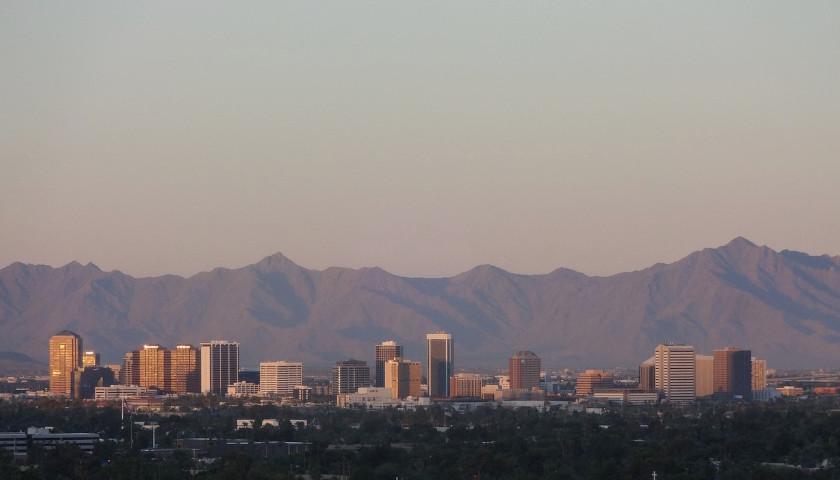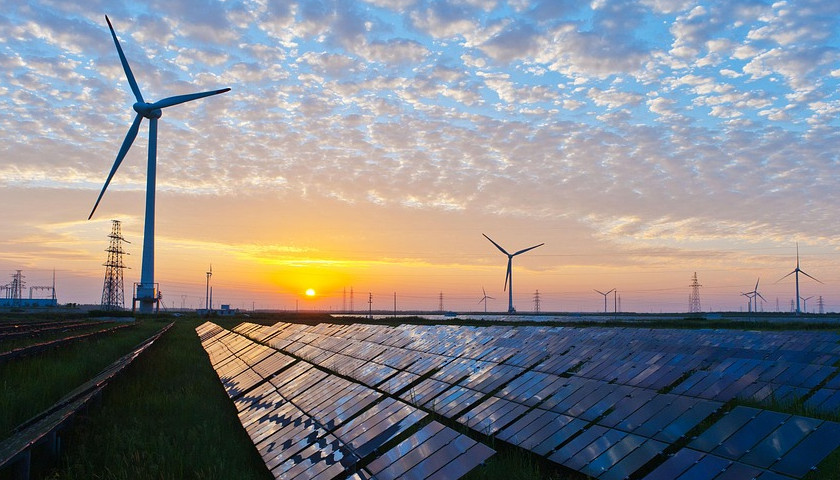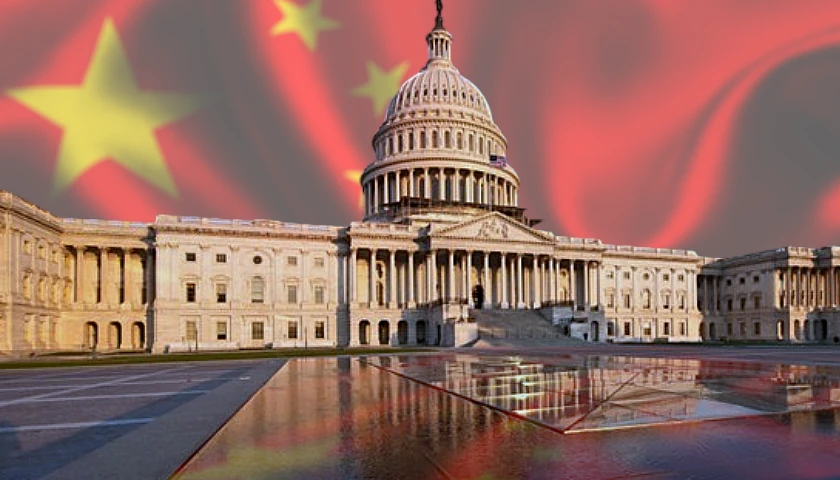The media has been full of headlines declaring how hot July was in Phoenix, but not everyone agrees, including experts. A CNN headline blared that “Phoenix just endured the hottest month for any US city as historic heat streak comes to an end,” The Washington Post declared, “Hottest month for a U.S. city: Phoenix sets national heat wave record,” and The Hill stated, “Phoenix sets record for hottest month.”
But Matt Pace, meteorologist for the Arizona Department of Environmental Quality, noted in mid-July, “Even though #Phoenix has not seen a below avg high temp since June 23rd, the first part of the year was cool enough that we have still had more below-average days than above-average days so far this year. That will likely change this weekend, but a positive for now. #azwx”
Even though #Phoenix has not seen a below avg high temp since June 23rd, the first part of the year was cool enough that we have still had more below-average days than above-average days so far this year. That will likely change this weekend, but a positive for now. #azwx pic.twitter.com/7e0Pn3PgSy
— Matt Pace (@MattPaceWeather) July 20, 2023
The media reported multiple heat records broken in July, including the number of days above 110 degrees. CNN published an article pointing to “climate change” as the reason. However, most accounts omitted key details, failing to provide the full context.
Kari Lake tweeted her criticism of one such alarmist response. Lacey Nagao, a Turning Point activist and children’s book author, posted a photo of a sign on a Dollar Store in Utah, which stated that the store was closed due to “extreme heat.”
Nagao wrote, “This is Logan, Utah. My mom sent me this text on Friday. It’s 91 degrees, a very typical temp for summer in the Wasatch Front. Fun fact- it was snowing here 30 days ago.”
Lake responded to the tweet, “And the Fake News will push this garbage and try to stoke fear.”
David Hondula, an Arizona State University scientist who studies heat and health, said in 2021 that the concrete jungle was the primary driver behind the heat increase in Phoenix, not climate change. “[R]eally the dominant driver here in Phoenix and many other cities in the past five, six, seven, eight decades is from urbanization and the effect of urbanization is clearest in those nighttime temperature records,” he told The Arizona Republic.
A study last year from the Heartland Institute found that 96 percent of the temperature stations placed by the National Oceanic and Atmospheric Administration (NOAA) failed its own “uncorrupted placement” standards. According to the study, the temperature gauges were placed too close “to asphalt, machinery, and other heat-producing, heat-trapping, or heat-accentuating objects.”
Heartland Institute senior Fellow Anthony Watts, the director of the study, said, “With a 96 percent warm-bias in U.S. temperature measurements, it is impossible to use any statistical methods to derive an accurate climate trend for the U.S.”
Heartland said the heat-bias problem has been happening for years. In 2009, the conservative think tank surveyed over a thousand stations and found that 89 percent had heat-bias issues.
Indeed, the temperature cited in the articles decrying the high temperatures were is taken at Sky Harbor Airport, which is one of the hottest parts of Phoenix due to its central location in the city and extensive amount of concrete.
Another factor leading to higher temperatures this year is that it is an “El Niño year,’ when a band of warm ocean water increases temperatures. Climate alarmists admit El Niño years come and go and are not evidence of “climate change.”
Many Twitter users chimed in with skepticism, providing anecdotal observations that tended to refute the the media’s “high temperature” narrative.
David Skinner noted, “The national weather service moved all of their weather stations to airports in the mid 90’s. Which coincides with the beginning of the global warming panic.”
Arizonan Peggy McClain tweeted a photo of her energy bill from July in Phoenix. “This is my account summary from SRP on July 21, 2023,” she said. “On that day, this July was only 1.2 degrees warmer than last July. And nobody talks about how long our winter was and how pleasant June was.”
Melina Lacy said, “Yesterday I was waiting in checkout line and WeatherBug alert popped up on my phone. Warning of heat index of 112 in my area. It was literally cloudy with light rain for most of day. Got in my car to leave store and temp was 76. They need to stop.”
Henrietta the Great observed, “Everyday Alexa says it’s going to be 115, 112, 113 etc in Queen Creek and it hasn’t been that hot yet! Instead it’s 106, 109, 108, etc … like it always is in the summer.”
The objections to the media’s characterization of the July heat weren’t just limited to Arizona residents. Others around the country reported similar discrepancies.
Tommy Jackson tweeted, “I’ve been getting ‘Near Record Temperature’ alerts for 87 degrees in mid/late July, in NY.”
CFlanders tweeted, “Here in the Midwest a few days ago they were claiming that in my area it was 103. It didn’t feel that hot and all day in my car the temp was reading 96. It was weird.”
Saibra said, “They said the same thing last week here in the DC area. It never once reached 100 deg.”
“NC had a very mild April & May & an average June!” said Ronnie Barnes. “Hot but normal! This coming week is going to be mild for early August.”
On July 31, Almanac.com – formerly known as The Farmer’s Almanac – reported that the minimum temperature at Sky Harbor Airport was 106 degrees, the mean temperature was 109, and the maximum temperature was 113.
In contrast, MSN stated during a regular broadcast that the temperature was 94 degrees at 10 p.m., a stark difference. Also on July 31 at 10 p.m., according to weather.gov, the temperature at Sky Harbor Airport was 93 degrees, while at Deer Valley Municipal Airport, a much smaller facility located in north Phoenix, it was only 91 degrees.
According to Extreme Weather Watch, while the highest temperature in Phoenix this year was 119 degrees, it also reached that temperature in 2017 and 2013, and reached 118 degrees several times in recent years. The highest temperature ever recorded in Phoenix was 122 degrees on June 26, 1990, followed by 121 degrees in 1995.
In 2022, Phoenix experienced relatively lower temperatures comparable to other recent years. According to an analysis of the National Weather Service’s temperatures by KTAR, “No months were in the top five warmest in the 125 years of record keeping,” and “Phoenix only had three days of record heat, down slightly from last year.” The article surmised, “[T]he heat wasn’t as extreme as in previous years, according to meteorologists.”
In July 2021, Phoenix set a cold record with three days below 85 degrees. The old record was two days, which was set in 1955 and 1911. A high temperature of 81 on July 25, 2021, was the coolest July day since July 24, 1955.
No significant reports of blackouts or power outages in Phoenix occurred in July.
– – –
Rachel Alexander is a reporter at The Arizona Sun Times and The Star News Network. Follow Rachel on Twitter. Email tips to [email protected].






